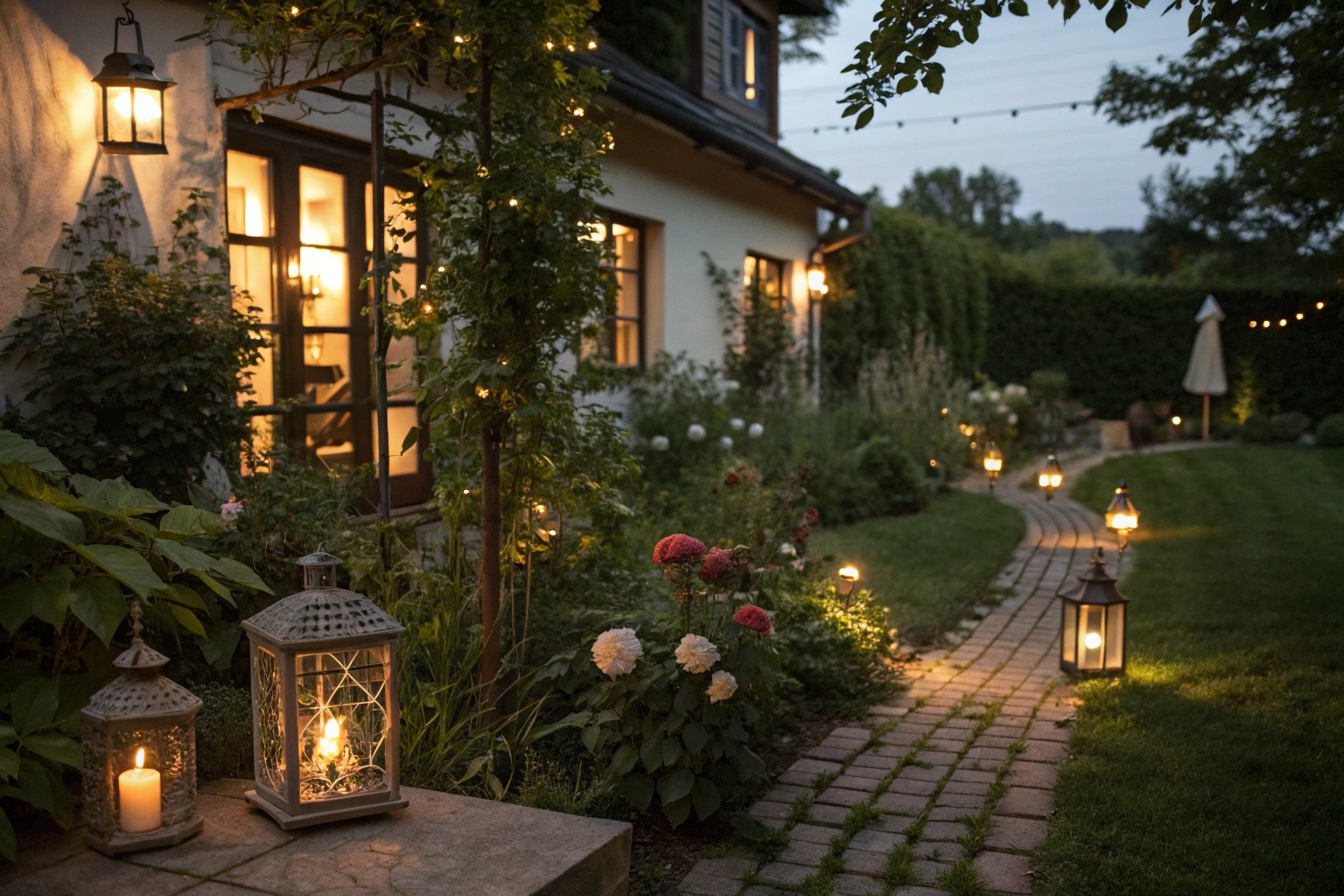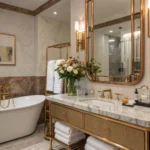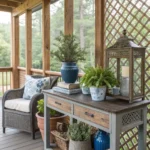Creating outdoor lighting that prioritizes mood over mere function transforms any garden, patio, or landscape into an enchanting evening retreat. When we shift focus from bright, utilitarian illumination to layered, atmospheric lighting, outdoor spaces become extensions of our homes rather than security-focused afterthoughts.
Understanding the Three Pillars of Atmospheric Outdoor Lighting
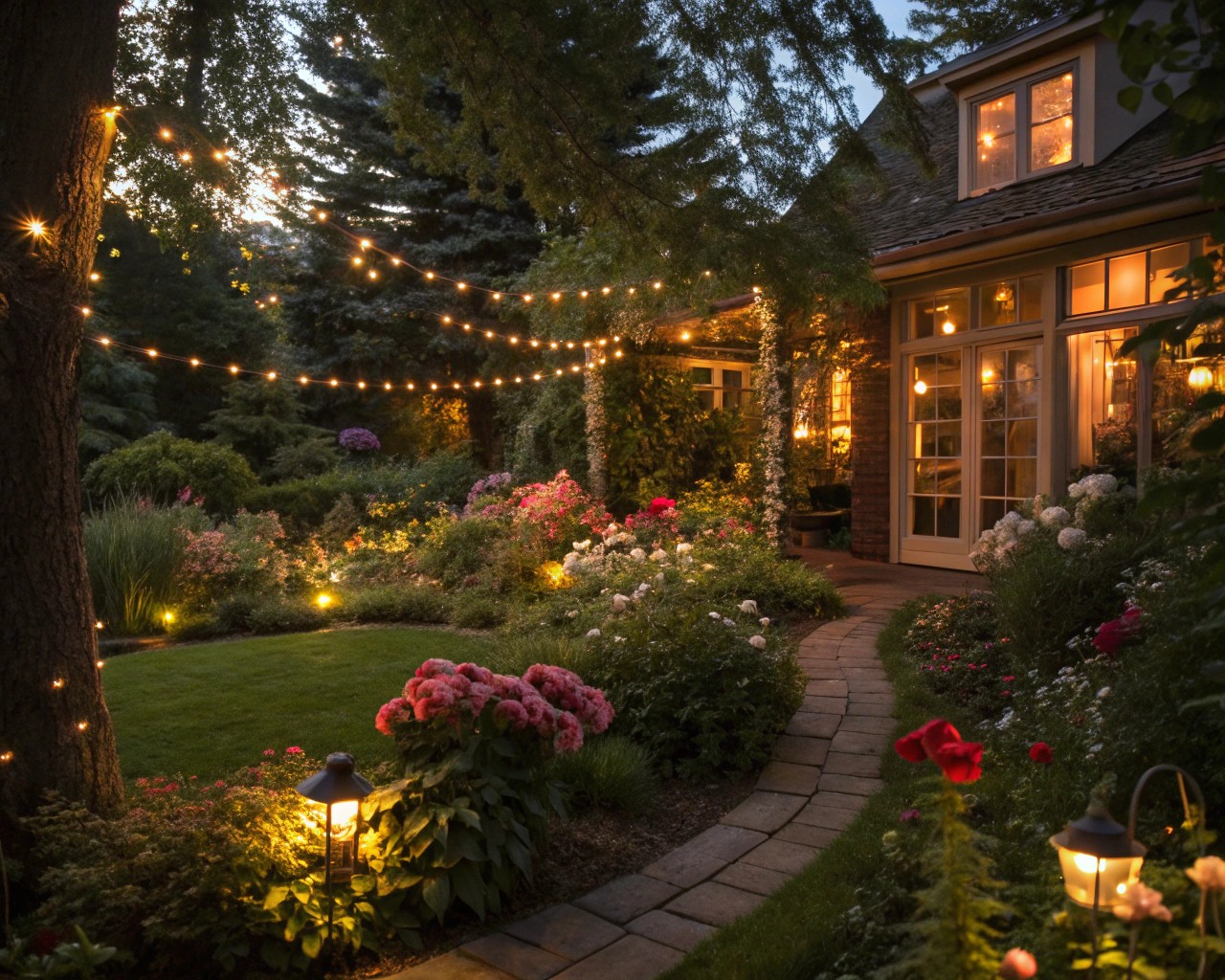
The foundation of ambient outdoor lighting rests on three distinct yet interconnected layers. Rather than flooding your space with uniform brightness, this approach creates depth, visual interest, and the warm, welcoming atmosphere that makes outdoor areas irresistible after dark.
Ambient Lighting: Your Foundation Layer
Ambient lighting provides the gentle, overall illumination that sets your space’s mood. Think of this as your outdoor room’s equivalent to a living room’s table lamps—soft, diffused, and never harsh. I’ve found that the most successful ambient lighting feels almost invisible in its placement, creating a warm glow without obvious light sources.
Effective ambient lighting options include:
- Wall sconces positioned along pergolas or patio walls
- String lights with warm LED bulbs draped between posts or trees
- Lanterns placed strategically throughout seating areas
- Tree lights that cast gentle illumination through branches
The key principle here is even distribution without creating stark contrasts or dark pockets that can feel unwelcoming.
Task Lighting: Functionality Without Harshness
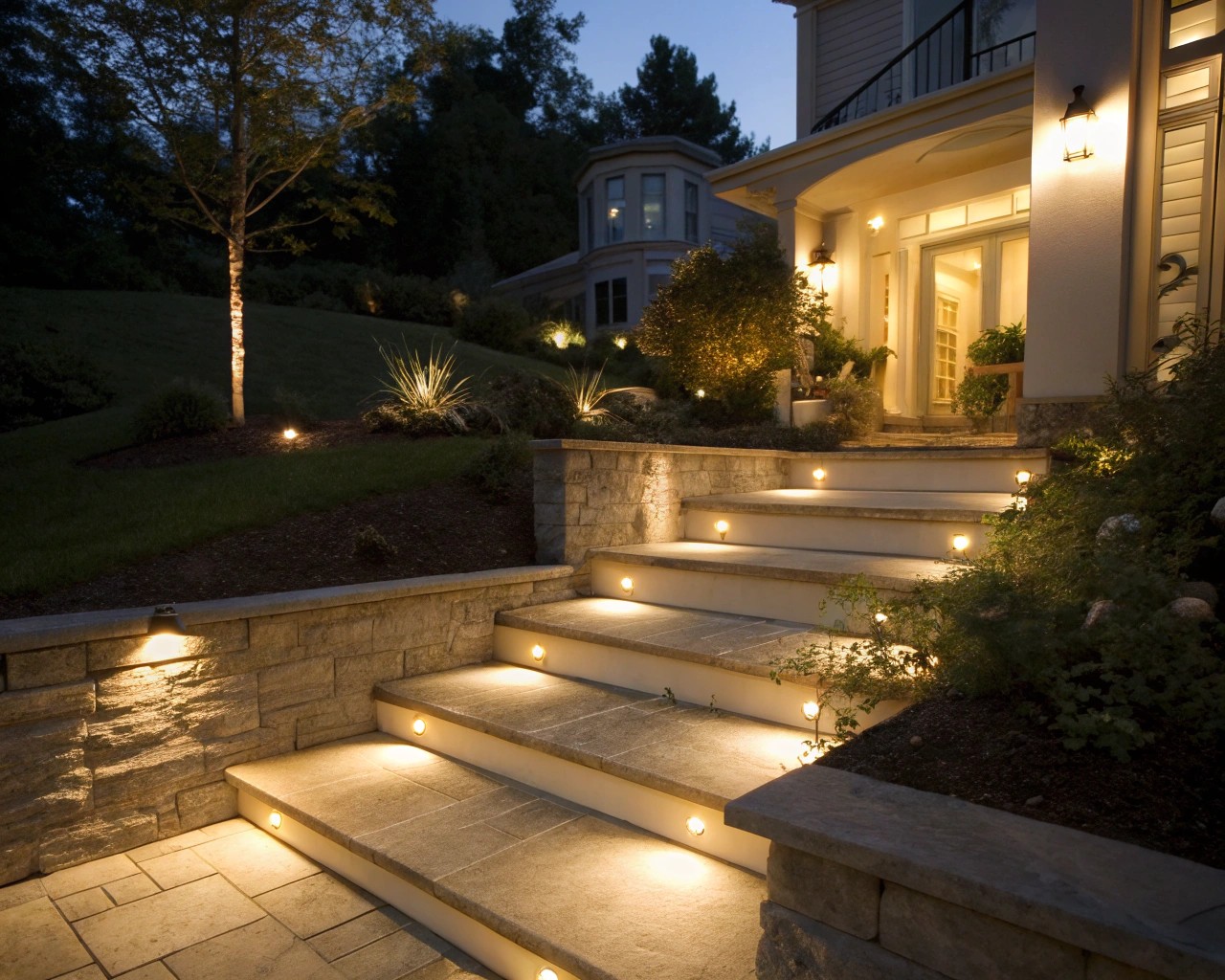
While ambience takes priority, certain areas require focused illumination for safety and usability. The art lies in providing adequate light without destroying the atmospheric quality you’re building.
Strategic task lighting applications include:
| Area | Solution | Ambience Consideration |
|---|---|---|
| Pathways | Low-profile LED path lights | Choose fixtures that direct light downward, not outward |
| Steps | Recessed step lights | Install flush with surfaces to minimize visual impact |
| Dining areas | Pendant lights or chandeliers | Use dimmers to adjust intensity based on occasion |
| Pool areas | Underwater and perimeter lighting | Opt for warmer color temperatures to maintain coziness |
When positioning task lighting, always consider how it integrates with your ambient layer rather than competing with it.
Accent Lighting: Creating Drama and Focus
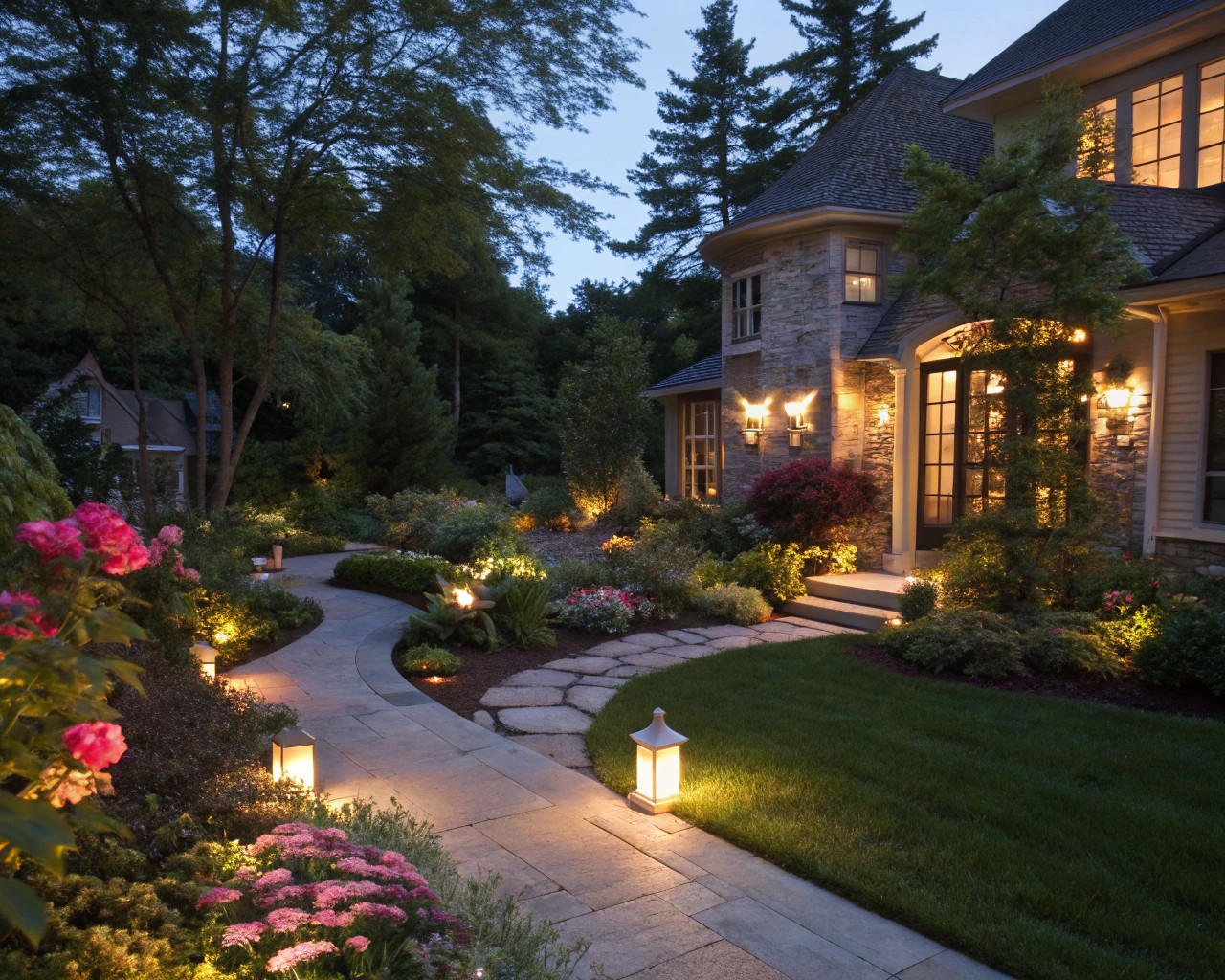
Accent lighting transforms good outdoor lighting into extraordinary outdoor experiences. This layer highlights your space’s most beautiful features while creating the interplay of light and shadow that gives landscapes their nighttime magic.
The most effective accent lighting techniques include:
Uplighting: Position fixtures at the base of trees, architectural features, or garden sculptures. The key is selecting appropriate beam angles—narrow beams create drama, while wider beams provide gentle washes of light.
Moonlighting: Perhaps the most atmospheric technique, moonlighting involves mounting fixtures high in trees to cast dappled light downward, mimicking natural moonlight filtering through branches. This creates moving patterns as leaves shift in the breeze, adding a dynamic quality that feels alive and natural.
Well lights: Ground-mounted fixtures that can uplight specimen plants or architectural details without visible hardware cluttering your landscape.
The Science of Color Temperature for Atmospheric Lighting
Color temperature dramatically influences the mood your outdoor lighting creates. While cooler temperatures (4000K+) might seem brighter, they create harsh, institutional feelings that destroy ambience.
For atmospheric outdoor lighting, the optimal range falls between 2700K and 3000K. This warm white range provides several advantages:
- Psychological comfort: Warm light triggers our biological association with fire and sunset, creating immediate feelings of relaxation
- Aesthetic harmony: Warm tones complement most exterior materials, particularly brick, stone, and wood
- Enhanced colors: Plants, flowers, and hardscape materials appear richer under warm illumination
- Reduced glare: Lower color temperatures feel gentler on the eyes, crucial for maintaining atmosphere
When I work with clients, I often explain that lighting should feel like an extension of a cozy indoor environment rather than a parking lot. The 2700K-3000K range achieves this consistently.
Strategic Placement and Concealment Techniques
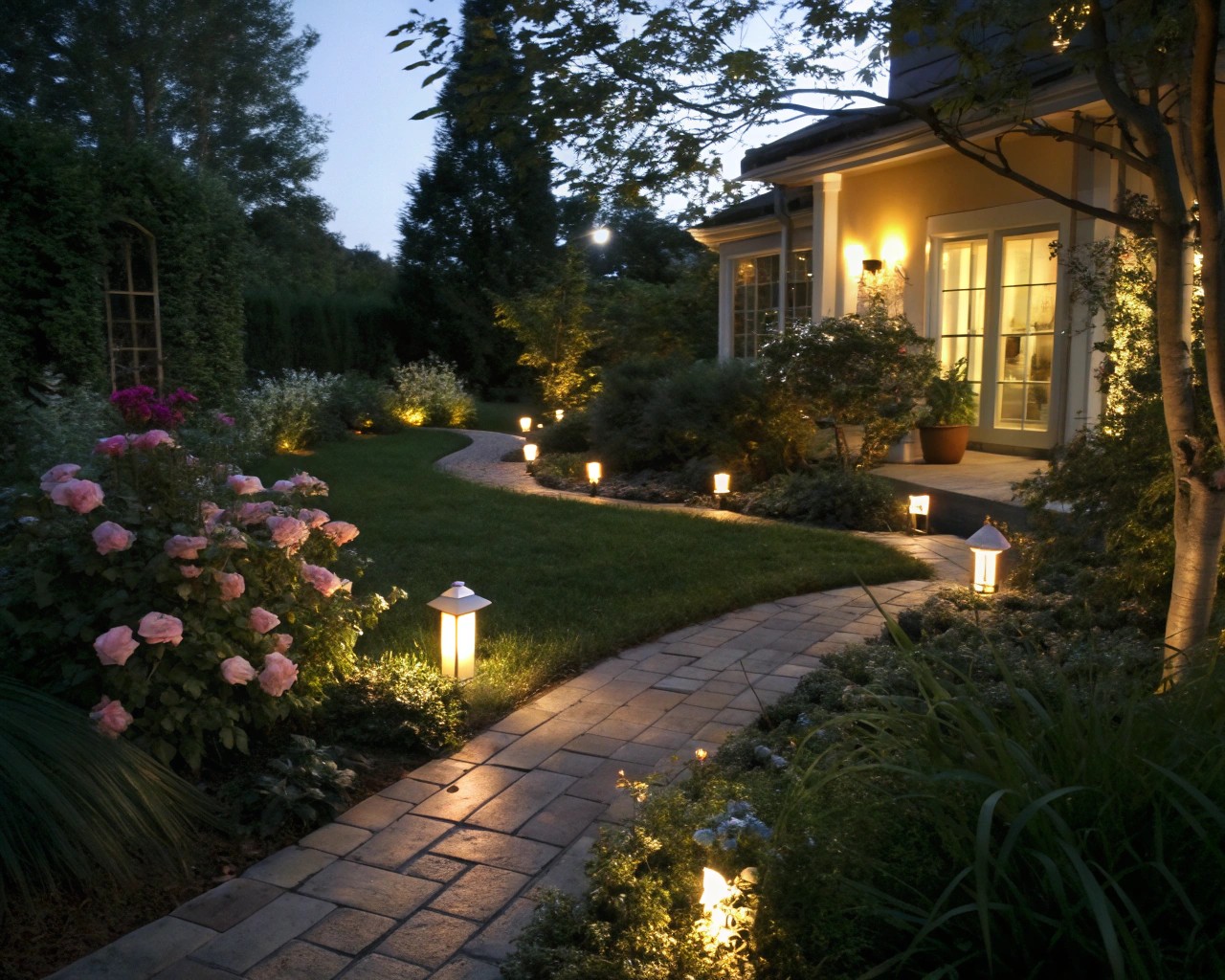
The most atmospheric outdoor lighting often appears sourceless—you experience the light’s effect without being distracted by the fixtures themselves. This requires thoughtful placement and, often, creative concealment strategies.
The Art of Hiding Light Sources
Behind landscape elements: Position fixtures behind plantings, rocks, or architectural features so only their light effect is visible. This works particularly well for uplighting trees or walls.
Integrated into hardscaping: Recessed fixtures built into steps, retaining walls, or pathways provide necessary illumination while maintaining clean sight lines.
Within existing structures: Mount downlights under eaves, pergola beams, or gazebo ceilings to create the moonlighting effect without visible hardware.
Creating Natural Light Patterns
The most convincing atmospheric lighting mimics natural light behavior. Consider how moonlight filters through trees, how firelight dances, or how sunset gradually illuminates a landscape. Your artificial lighting should echo these organic patterns.
Effective techniques include:
- Varied heights: Mix ground-level, mid-height, and elevated fixtures to create layered illumination
- Asymmetrical placement: Avoid rigid spacing that feels institutional
- Directional variety: Combine uplighting, downlighting, and cross-lighting for dimensional effects
Energy Efficiency Without Compromising Atmosphere
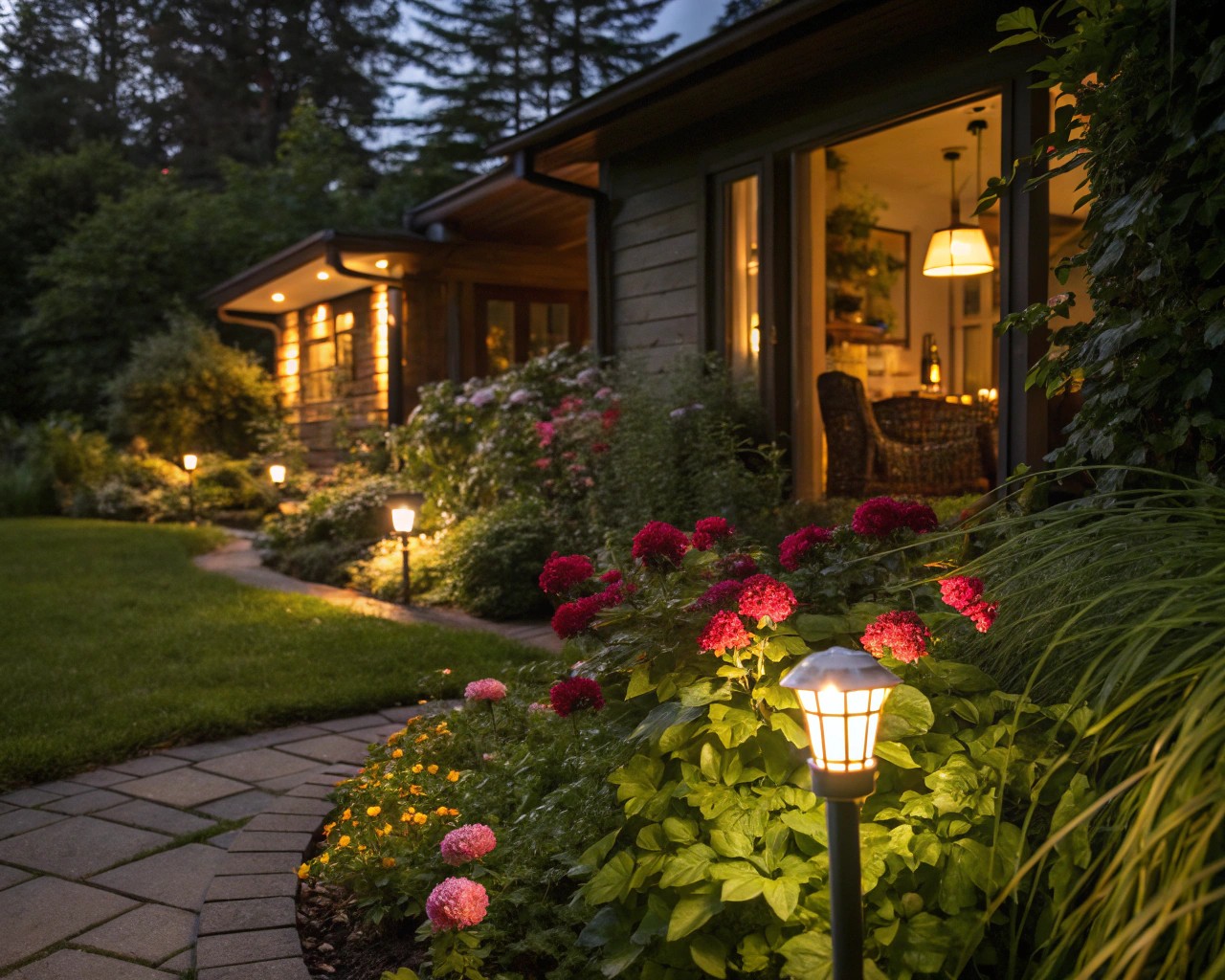
Modern LED technology allows for extensive atmospheric lighting without environmental guilt or excessive utility costs. LED fixtures designed for outdoor use consume up to 90% less energy than traditional incandescent options while providing superior longevity.
Smart Lighting Integration
Contemporary outdoor lighting systems offer sophisticated control options that enhance both convenience and atmosphere:
Dimming capabilities: Essential for adjusting lighting intensity based on occasion—bright enough for dinner parties, dim enough for romantic evenings
Scheduling features: Automatically adjust lighting throughout the evening, perhaps starting bright and gradually dimming as the night progresses
Zone control: Manage different areas independently, allowing you to illuminate only the spaces you’re using
Weather integration: Systems that automatically adjust for seasonal daylight changes or current weather conditions
Practical Installation Considerations
Atmospheric outdoor lighting requires attention to technical details that ensure both safety and longevity. Poor installation can undermine even the most thoughtful design.
Weatherproofing and Durability
Outdoor fixtures must withstand your regional climate extremes. Look for ratings of IP65 or higher for most applications, with IP67 ratings for areas with consistent moisture exposure like pool surrounds or fountains.
Material selection significantly impacts both aesthetics and longevity:
- Brass or copper: Develops attractive patina over time while resisting corrosion
- Marine-grade stainless steel: Excellent for coastal environments
- Powder-coated aluminum: Lightweight and corrosion-resistant for most climates
Voltage and Wiring Strategies
Low-voltage systems (12V) offer several advantages for atmospheric lighting:
- Safety: Reduced shock hazard during maintenance
- Flexibility: Easier to modify layouts as landscapes mature
- Efficiency: Compatible with LED technology and smart controls
- Cost: Lower installation costs than line-voltage systems
However, low-voltage systems require transformers, and voltage drop over long runs can affect performance. Professional consultation often proves valuable for complex installations.
Designing for Different Outdoor Zones
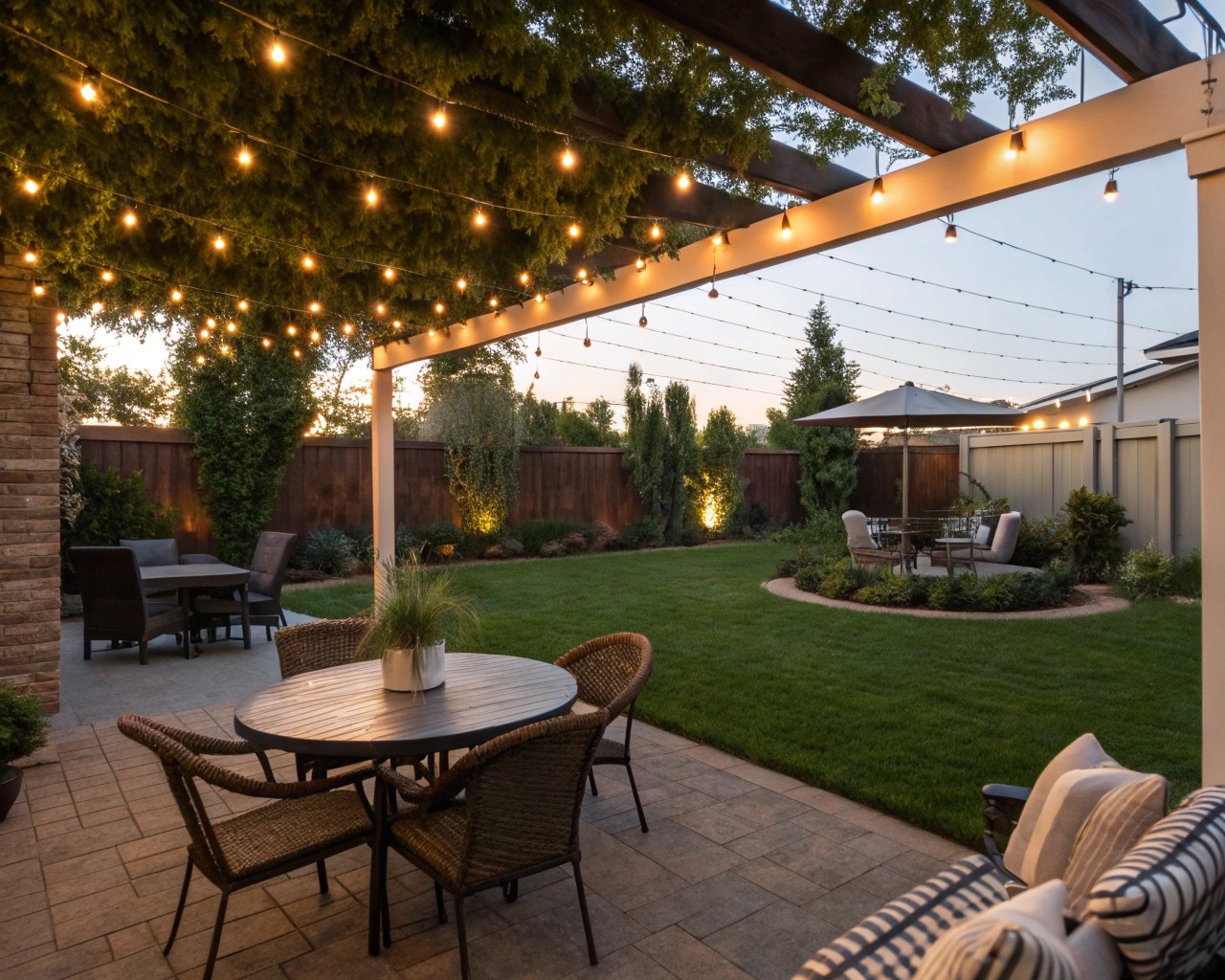
Each area of your outdoor space serves different functions and requires tailored lighting approaches while maintaining overall atmospheric cohesion.
Entertainment Areas
Patios, decks, and outdoor dining spaces need flexible lighting that adapts to various activities. The most successful designs incorporate multiple lighting layers with independent controls:
Primary illumination: Overhead fixtures (chandeliers, pendant lights, or ceiling-mounted options) provide general lighting for activities like dining or conversation
Secondary accents: Perimeter lighting through wall sconces, post lights, or string lights creates intimate boundaries
Decorative elements: Candles, lanterns, or fire features add the flickering light that makes gatherings feel special
Garden and Landscape Areas
Gardens benefit from subtle lighting that reveals their beauty without overwhelming delicate plantings. The goal is enhancement, not transformation.
Specimen highlighting: Feature trees, architectural plants, or garden sculptures with carefully positioned spotlights or uplights
Pathway definition: Guide movement through garden spaces with low-level path lights that illuminate the ground without creating glare
Layered plantings: Use different lighting techniques for various plant heights—ground cover, shrubs, and trees each respond differently to illumination
Pool and Water Feature Areas
Water features present unique opportunities for atmospheric lighting. The combination of light and moving water creates mesmerizing effects that serve as natural focal points.
Underwater lighting: Provides dramatic illumination from within pools or fountains, but use restraint—too much underwater lighting feels commercial rather than residential
Perimeter lighting: Illuminate pool surrounds and nearby seating areas with soft, warm lighting that complements rather than competes with water effects
Reflection considerations: Position lighting to create appealing reflections on water surfaces while avoiding glare
Seasonal Adaptations and Long-term Thinking
Atmospheric outdoor lighting should enhance your space throughout the year, accounting for seasonal changes in both plant material and usage patterns.
Accommodating Plant Growth
Design lighting systems with plant maturity in mind. That small ornamental tree that looks perfect with its current uplighting will eventually require fixture repositioning or different beam angles as it grows.
Plan for:
- Adjustable fixtures that can be repositioned as plants mature
- Pruning accessibility to maintain desired lighting effects
- Seasonal color changes that may require different lighting intensities
Winter and Holiday Considerations
In regions with significant seasonal changes, your lighting system should remain effective when deciduous plants lose their leaves and snow changes ground-level visibility. String lights and architectural lighting become more prominent during winter months, while uplighting of bare tree branches can create striking silhouettes.
Common Mistakes That Compromise Atmosphere
Even well-intentioned outdoor lighting projects can fail to achieve their atmospheric potential due to predictable pitfalls.
Over-illumination
The most common error is providing too much light. Atmosphere requires contrast—areas of brightness balanced with areas of relative darkness. Complete illumination destroys the sense of mystery and discovery that makes outdoor spaces magical after dark.
Poor Color Temperature Consistency
Mixing different color temperatures within the same visual field creates an uncomfortable, disjointed feeling. Maintain consistency within zones, even if you use slightly different temperatures for different areas.
Ignoring Sight Lines
Consider how your lighting appears from all viewpoints—from inside your home looking out, from different areas within your outdoor space, and from neighboring properties. Exposed bulbs or poorly positioned fixtures can destroy the illusion you’re creating.
Neglecting Maintenance Access
Atmospheric lighting often involves fixtures in challenging locations—high in trees, integrated into hardscaping, or hidden behind plantings. Plan for bulb replacement and cleaning from the design phase to ensure your system remains beautiful over time.

